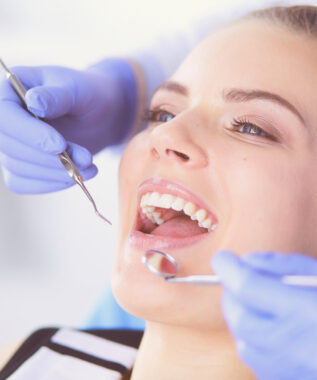 When your tooth is compromised and needs treatment, the right treatment can be customized to meet your specific oral health needs and preferences. That customization also helps you restore and preserve a tooth that’s been severely compromised by things like damage or progressive tooth decay. Because of this, many people are able to preserve teeth that might otherwise be lost, which is typically preferable for the good of their long-term oral health. However, there can still be some dental concerns that leave your tooth too severely compromised to be successfully restored. If this is the case with your tooth, then extracting it might be a necessary step in restoring your smile.
When your tooth is compromised and needs treatment, the right treatment can be customized to meet your specific oral health needs and preferences. That customization also helps you restore and preserve a tooth that’s been severely compromised by things like damage or progressive tooth decay. Because of this, many people are able to preserve teeth that might otherwise be lost, which is typically preferable for the good of their long-term oral health. However, there can still be some dental concerns that leave your tooth too severely compromised to be successfully restored. If this is the case with your tooth, then extracting it might be a necessary step in restoring your smile.
Why tooth extraction isn’t recommended often
The goal of most dental health care treatments is to help you preserve your natural tooth structure, and advancements in dental care have made that possible in increasingly more situations. This is why tooth extraction isn’t typically the recommended treatment for most dental concerns. If you extract a tooth, then your dental ridge will lose all of the tooth’s natural structure, and the loss can have several additional, long-term impacts on your oral health.
Why a tooth might need to be extracted
Because compromised teeth can usually be saved with the right restorative treatment, there’s a special significance when tooth extraction is recommended. As a last-resort treatment option, the need for tooth extraction means that the tooth is too compromised to be saved and, as a result, can pose a threat to the rest your teeth and oral health. Extracting the tooth can prevent this, and may be recommended in cases such as:
- A tooth that’s extremely fractured or broken
- The extensive progression of tooth decay
- A failed restoration that has exposed to the tooth to more harm
- A wisdom tooth that has become impacted
- And more
What you can do after the tooth is extracted
The potential consequences of losing a tooth are a big reason why tooth extraction isn’t recommended more often. However, if it is recommended, that doesn’t mean those concerns should be ignored. In many cases, it’s important to replace the tooth as soon as possible after it’s been extracted with a custom-designed, lifelike restoration. For example, a dental implant and crown can replace the natural root and crown of your tooth, reestablishing most of its function and ability to preserve your surrounding oral structures.
Learn if your tooth needs extraction
The right dental treatment can help patients save and preserve their teeth in many different situations. However, tooth extraction may still be the best option in certain severe situations. To learn more, schedule an appointment with us by calling Dreem Dentistry in Leawood, KS, today at 913-681-5500.






